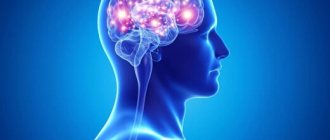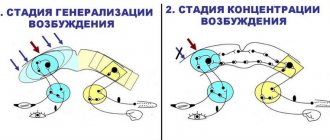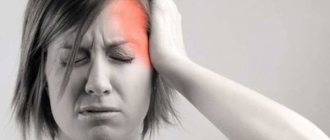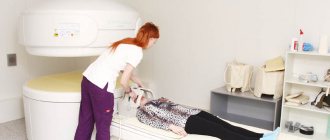Babinski reflex
is one part of the testing that doctors use to check for neurological conditions. Irregular reflex responses may be a sign of an underlying neurological condition that will require further testing to make a diagnosis.
The Babinski reflex, also called the plantar reflex, is an automatic reflex of the foot in response to stimulation. Joseph Babinski, a French neurologist, first documented this reflex in 1896. Testing for the Babinski reflex involves stroking the sole of the foot and assessing the response in the toes. If the Babinski reflex is present, the big toe will rise up and the other toes will fan out to the sides.
Although it took some time for the reflex to gain recognition, it is now one of the important signs in clinical neurology. Doctors still use the Babinski reflex as a standard part of neurological testing.
The Babinski reflex determines the health of the cortical part of the spinal tract, which is the nerve channel that transmits information between the brain, body and limbs. It is primarily responsible for motor control in the body and limbs.
Babinski reflex in children
Study published in the International Journal of Physiology
, showed that the Babinski reflex occurs in approximately 62-75% of newborns. Because newborns usually do not yet have a fully developed nervous system, the reflex is not a sign of neurological disease.
Although the reflex reaction is normal in infants, it should be absent after 24 months of life. In some cases, the reflex reaction disappears earlier - already at the age of 1 year. Doctors believe that Babinski's reflex, which occurs in adults or children over 2 years of age, is an abnormal reflex reaction. This may be a sign of an underlying neurological condition or nervous system disorder.
Classification of types of Anton Babinski syndrome
Currently, the following types of anosognosia have been described (A. Parnyakov, A. Vlasova. Neuropsychological syndromes. - 2004):
1. Anosognosia of blindness. Occurs if the lesion involves the posterior parietal and anterior occipital regions of the cortex. In this case, the patient denies complete loss of vision of central origin (for example, with optic nerve atrophy or cortical blindness), and tries to compensate for the lack of real visual impressions with confabulatory, fictitious images, without realizing it at all. Thus, when asked by a doctor what color this or that object is, patients confidently answer using their past experience, but they hesitate to answer when asked about the number of people in the room. A person suffering from cortical blindness will claim that his vision is fine and come up with excuses for objections. For example, “the room is dark” or he “forgot to put on his glasses.”
2. Anosognosia of deafness (the lesion involves the temporal lobes). The rarest option.
3. Anosognosia of aphasia (the focus involves speech centers). It occurs in patients with predominantly severe acoustic-gnostic sensory aphasia, whose speech is a stream of continuous literal and verbal paraphasias (“verbal okroshka”). Patients do not notice errors in their speech, they think that their speech is not changed and is well understood by others. Having discovered that they are not understood, they begin to get angry, showing affective instability. In milder cases of sensory aphasia, when speech is moderately altered, patients also do not notice their own errors in speech (paraphasia) and do not make attempts to correct them, but with constant contact with a neuropsychologist they are able to agree that the understanding of speech by others is incomplete.
4. Anosognosia of paralysis or hemiplegia (the focus involves the precentral area of the cortex). Typical for this disorder is the occurrence of anosognosia with paralysis or paresis of the left limbs in right-handed people due to a stroke. Patients claim that they have preserved movement in their left limbs, that they can, if they want, get up and walk, but at the moment they simply do not want to do this. Such denial of a motor defect is often accompanied by confabulations: patients claim that they recently went for a walk, visited their relatives, etc. If you draw the patients’ attention to the motionless left limbs, they will agree that they cannot move them, but soon they again begin to insist on the safety movements in the left arm and leg.
5. Anosognosia of pain (the focus involves the postcentral region of the cortex). Patients can indicate the presence and intensity of irritation, but the unpleasant sensations associated with it are absent or mild. In the most severe cases, patients completely deny pain.
In what diseases is a positive Babinski reflex observed?
In adults and children over 2 years of age, the Babinski reflex may be a sign of an underlying central nervous system disorder or another problem in the cortical spinal tract. Possible associated disorders include:
- spinal cord injury
- spinal cord tumors
- defects of the spinal cord or spine
- brain tumor
- multiple sclerosis (MS)
- Lou Gehrig's disease
- stroke
- meningitis
- cerebral paralysis
Because a reflex response is not a diagnosis in itself, a person who has an abnormal reflex response will still need further testing to determine the underlying cause.
Types of reflexes studied
Today, modern medicine has proposed the following classification of pathological reflexes:
- upper limb reflexes;
- reflexes of the lower extremities;
- oral reflexes.
Neurological examination of the upper extremities
Pathological reflexes of the upper extremities include the following:
- Rossolimo
(manifests itself when struck at the ends of bent 2-4 fingers). - Zhukovsky
(can be diagnosed by striking the center of the palm in response to bending the fingers). - Bekhterev
(for diagnosis it is necessary to hit the patient on the outside of the back of the hand). - Jacobson-Lask
(used at the time of studying the carporadial reflex, in which reflex flexion of all fingers of the hand occurs).
Reflexes of this etiology can appear in infancy and continue to develop until the child is 2-3 years of age. Their manifestation during this age period is not considered a deviation from the norm, and therefore is a cause for concern.
If these reflexes are present in children 4-6 years of age, then we can assume the development of pathological processes in the central nervous system.
In this case, it is mandatory to conduct an examination by a neurologist and prescribe clinical and laboratory tests to establish and confirm the alleged diagnosis.
Neurological examination of the lower extremities
Pathological reflexes of the lower extremities include the following:
- Babinsky
(it is possible to identify if there is an irritant on the sole of the foot. To do this, you will need to run a hammer or toothpick from the bottom of the heel to the toes themselves). - Oppenheim
(for diagnosis you will need to run your hand along the front of the lower leg). - Gordon
(may appear when the calf muscle on the leg tightens). - Schaeffer
(diagnosed by pressing on the Achilles tendon). - Rossolimo
(to establish, you will need to hit the tips of 2-3 fingers located on the foot with a hammer). - Zhukovsky
. As in the case of pathological reflexes of the upper extremities, its diagnosis will require a light blow to the middle of the patient's foot. - Ankylosing spondylitis No. 1
(a blow is carried out on the outer part of the foot in the area of 4-5 toes). - Bekhterev No. 2
(to establish, you will need to make a moderate blow to the heel itself). - Chaddock
(manifests itself with a streak type of irritation of the skin of the lateral part of the foot, as well as slightly below the outer side of the ankle). The direction must be kept from the heel to the toes. Pathology will be indicated by flexion of the first big toe. - Inferior Bekhterev-Mendel reflex
. To diagnose, you will need to place the patient on his back and quickly tap with a special hammer on the back of the foot in the area of 3-4 toes. Pathological disorders will be indicated by flexion of the sole in the area of 2-5 toes. - Binga
(diagnosed when the foot is tingled with the back of a needle). A positive response will be the flexion of the first toe.
Oral reflexes
Pathological reflexes of the oral muscles usually include the following:
- Proboscis symptom
(can be diagnosed by lightly tapping the lips with a hammer). To do this, the doctor asks the patient to close his eyes, after which he places his index finger on the lips and makes light blows on it. A positive reaction will be manifested in contractile movements of the orbicularis oris muscle, and the lips will also be pulled forward. - If such a reaction appears only when a finger touches the patient’s lips, then one should assume the development of the Karchikyan
. - Sucking
(for diagnosis, rough irritations are made along the edges of closed lips). The diagnosis will be confirmed by a reaction in the form of involuntary swallowing or sucking movements of the patient. - Nasolabial
(manifested by lightly tapping hammers on the back of the nose). - Marinescu-Radovici palmar-chin symptom
is caused by exposure to a rough irritant on the skin of the palm above the thumb itself. The pathological reaction will manifest itself in the form of pulling up the skin of the chin (contractile movements of the mental muscle). - Glabellar
(diagnosed by lightly tapping the central area of the eyebrows). A positive reaction will consist of percussion in the area of the glabella. With each such blow, the person will twitch and close his eyebrows. The manifestation of this reflex indicates the presence of lesions in the frontal lobe of the brain. - Protective
(manifests itself at the time of paralysis). In this case, the patient begins to experience involuntary motor acts in the paralyzed part of the limb (this will be the body’s reaction to various irritating factors from the external environment). - An example of a protective reflex is the Bekhterev-Marie-Foy symptom
(consists in bending the toes of a paralyzed limb in response to irritation). Flexion and extension of the leg in the hip and knee joints may also occur. - Grasping
reflex (manifests itself as a result of extensive damage to the frontal lobe). Metabolic and vascular pathologies can also provoke the disease. - The chewing
reflex can be diagnosed by slightly irritating the fingertips of the hand or by simply touching the palm of the back of a hammer. A positive reaction will manifest itself in a sharp grasping movement of the object that acted as a direct irritant.
Testing and results
To test for the Babinski reflex, the doctor uses a blunt object such as a spatula. Before the test, the person must be in a relaxed state. You can warn the person about the sensation of the test, which can range from ticklish to uncomfortable and unpleasant. The therapist will then firmly stroke the bottom of the foot with an object, moving from the heel up to the toes and then to the big toe. The standard response occurs automatically, causing the toes to curl downwards in the direction of the pressure and stimulation. This normal reaction confirms that the Babinski reflex is absent.
The Babinski reflex occurs when the big toe extends upward toward the top of the foot. At the same time, the other toes fan out in different directions. If this happens, it means that the Babinski reflex is positive.
If nothing happens and there is no reaction, then this is a neutral result. The test is therefore of no value and doctors will move on to other testing methods.
The neurologist will perform a test on both legs. A reflex that is present in one leg and absent in the other can indicate which side of the nervous system is affected by the underlying condition.
Pathological reactions of unconditioned reflexes
In addition to pathological reflexes of the upper, lower extremities and oral muscles, pathological reactions of unconditioned reflexes are also distinguished:
- Reflexes are perverted
. Such reflexes provoke the formation of a dominant focus in the area of the main center (for example, bending the arm). When the tendons are stretched, at the moment of irritation due to the dominant focus, the limb will not flex, but extend. This pathology can be triggered by intoxication with tetanus toxins, injury to nerve endings and pressure on the nerve fibers of scars. - Reflex contractures
. They appear in the area where the dominant focus has stagnated. Nerve impulses that will be transmitted through the joints from the area of injury will first create and later strengthen this focus in the spinal cord itself. As a result of this process, strong flexion of the injured limb occurs, which, if prolonged, causes severe pain and discomfort. - Reflex paralysis
. They appear due to the slowing down of motor neurons in the impulses of more sensitive neurons. An example is the formation of scars in the area of sensitive nerve endings. With strong pressure and pinching of the nerve, paralysis of the limbs and body can develop. - Reflexes exhibiting nonspecific reflex projection
. One of the striking examples of this type of reflex is Babinski’s symptom. It involves bending the toes when a stimulus is applied to the area from the end of the heel to the beginning of the toes.
What indicates disturbances in the functioning of the cerebellum
The first sign indicating a disturbance in the activity of the cerebellum may be:
- Nystagmus is involuntary twitching of the eyeball with a frequency of up to 100–200 times per minute. With this symptom, one gets the impression that the patient reads very quickly, as if his eyes “jump” from one line to another.
- Intention tremor is trembling muscle contractions when trying to touch something. For example, if you try to touch the tip of your nose or your heel with your finger, the amplitude of the trembling will increase in accordance with the approach to the required point of contact.
- Systematic or periodic loss of balance when walking and while in a peaceful state.
- Difficulty or impossibility of simultaneously performing opposite movements of the limbs . For example, the patient is not able to shorten one foot and at the same time tighten the toe on the other. Or, when walking, perform pendulum movements with your arms forward and backward.
- Problems with the speech apparatus.
I would like to note that if any of the above symptoms appear, it can be assumed that the cerebellum is damaged.
In a particular case, any of its departments can become a “victim,” but most often the disease “eats” the cerebellar vermis. How quickly the disease spreads affects the extent and frequency of symptoms.
The location of the affected area of the cerebellum is also important. The higher it is, the worse the condition of the sick person. Synergy is a series of factors responsible for stabilizing the center of gravity.
Characteristic symptoms
If the cerebellar vermis is affected, the patient will experience the following symptoms:
- body swaying when walking;
- moving with legs wide apart;
- loss of balance while standing;
- state resembling intoxication.
During normal operation of the cerebellum, a number of complex processes occur in it, several thousand signals are sent that stimulate the contraction of muscle tissue.
If you “turn off” at least one of these signals, then the harmonious functioning of individual limbs simultaneously with the rest becomes impossible.
So, for example, when walking on foot, the patient seems to bend backwards. The reason for this is the center of gravity moved to the rear. It turns out that the legs perform motor functions, but the body “slows down” and “does not have time.”
Or, for example, when a patient tries to bend back, he will fall, since the knee and ankle joints will not have time to bend simultaneously with the lumbar region in order to distribute the center of gravity.
It is also noteworthy that the patient is unable to simultaneously bend the joints of the thigh and lower leg, which causes significant discomfort when trying to squat.
To determine the presence of a symptom, you do not need to spend a lot of time in hospital settings or donate blood, urine or other tests.
To determine asynergy, it is enough to conduct a series of visual tests. This can be done either with the help of a specialist or independently at home.
A characteristic symptom of disturbances in the functioning of the cerebellum is dysmetria. What are the characteristics of this disorder?
How dangerous is post-traumatic encephalopathy of the brain and what complications does the disease threaten in the future? Treatment methods offered by modern medicine.
A word about treatment
There is no treatment for asynergia syndrome as such, since it is not a disease, but a symptom of a cerebellar disease.
Specialists, as a rule, prescribe medications rich in vitamins, as well as massage procedures. This course helps maintain the overall tone of the body, strengthen the immune system, and warm up muscle tissue, but does not lead to absolute recovery of the patient.
You should not visit dubious home doctors when a symptom appears. After all, if modern medicine does not know how to eliminate a disorder, then a self-taught healer even more so. Take care of yourself!
What does one-sided and two-sided reflex mean?
In medical practice, there are cases when a pathological reflex is observed on both feet of the patient. In an adult, this situation indicates the severity of the disease that led to this result. In most cases, these are infectious or inflammatory processes occurring in the spinal cord or brain, affecting its central motor neuron.
Below are a number of diseases in which bilateral Babinski's sign often appears:
- meningitis;
Meningitis in adolescents. Symptoms - spinal cord tuberculosis;
- chronic progressive diseases of the central nervous system;
- spinal paralysis;
- head injuries;
- increased intracranial pressure;
- damage to the pyramidal tract;
- rabies.
Early detection of the symptom is important. This is due to the fact that many diseases have a high rate of development. The consequences of delaying diagnosis and treatment of the disease lead to irreversible consequences for the patient’s body.
To complete the clinical picture, in addition to the Babinsky reaction itself, accompanying signs are taken into account, with the help of which the lesion can be more accurately determined.
Associated signs of damage to the brain or spinal cord:
| Sign | Spinal cord | Upper motor neuron |
| Reflex response | Fast and pronounced | Slow and tonic |
| Big toe extension | Long-term | Short term |
| Paresis | Proximal | Distal |
| Superficial abdominal reflexes | None | Fine |
| Other signs | Pelvic disorders | Hyperreflexia, synkinesis |
It is not possible to make a full diagnosis based on reflexes and signs alone. However, this is enough to determine the direction of further diagnosis and early detection of diseases.
Therapy
Babinski's symptom is one of the pathological reflexes in which the therapeutic effect of treatment can occur only if the root cause of its occurrence is discovered.
Based on the results of a complete diagnosis, the doctor can make an accurate diagnosis. Treatment in this case will depend on the identified disease. The main direction of the fight is to prevent complete muscle paralysis due to the progression of the disease.
Depending on the disease, the following treatment methods can be used:
- immunotherapeutic (for mild degrees);
- medicinal (for mild and moderate severity);
- chemotherapy (malignant tumors);
- physical (massage, radio/UHF therapy, electrophoresis);
- surgical (if conservative treatment is ineffective).
The choice of method and treatment regimen are strictly individual for each patient. As a rule, in addition to the neurologist, other specialists in a narrow field of medicine participate in this process, depending on the disease.
In most cases, even with effective treatment, the patient requires long-term rehabilitation to restore lost functions. In severe illnesses, the recovery process is impossible, and the damage may be irreversible.
That is why preventive examinations by a neurologist and other specialists are necessary. A timely detected Babinski symptom for a person is an opportunity to prevent harmful consequences for the body.
Special role
Babinski's sign on the right or left is classified as pathological reflexes. That is, those that manifest themselves with structural or functional damage to different parts of the central nervous system. They, as you already understood, are used to diagnose nervous diseases.
When the intensity of manifestations of such reflexes is high, we talk about hyperreflexia, but if it is reduced to the point of loss, then we are talking about hyporeflexia, and if the manifestation of the reflex is uneven, then about anisoreflexia. But, by the way, if the decrease or increase in reflexes is symmetrical, then often this is not a sign of central nervous system diseases.
Diagnosis in neurology
To establish an accurate diagnosis, a specialist should pay special attention to the following issues:
- Careful collection of medical history of the patient and his family members (importance is given to genetic predisposition to neurological pathologies).
- Clinical laboratory blood tests.
- Carrying out all necessary medical examinations.
- Diagnosis of abnormalities in the functioning of the central and peripheral nervous systems.
Diagnosis of abnormalities in the functioning of the nervous system can also be carried out using the following methods:
- Electromyography . During the procedure, the neuromuscular synapse, as well as primary and secondary myopathies, are studied. Both the facial nerves and the endings of the upper and lower extremities are examined.
- Nerve conduction study procedure . Allows you to evaluate the speed of impulse conduction between motor fibers and stimulating points. If the results show low numbers, the doctor may assume the development of demyelination.
- Electroencephalography method . Most often recommended for studying epileptic seizures. In some cases, it is used to confirm the presence of damage to the human cerebral cortex and various somatic pathologies.
- Lumbar puncture.
- Magnetic resonance imaging and computed tomography.
No medical equipment is required to diagnose the Babinski reflex in newborn infants. To confirm the diagnosis, the neurologist will only need a hammer, which he will use on the outside of the sole. In this case, there should be a slow extension of the thumb (the rest at this moment should remain motionless).
Diagnostics
As a rule, a positive Babinsky test is the result of a special examination performed by a neurologist. After all, people themselves without medical education may not even be aware of the presence in their body of a failure of the impulse to the skeletal muscles.
In order to clarify what was the root cause of the pathological symptom, it will be necessary to carry out a number of clarifying diagnostic procedures:
- various blood tests - general, biochemical, for autoimmune processes;
- angiography of cerebral vessels - previous headaches may indicate vascular lesions, for example, atherosclerosis with foci of ischemia;
- magnetic resonance imaging - changes in the nerve impulse due to compression of the fiber by a tumor, traumatic tissue edema, intracranial hematoma;
- spinal puncture to take cerebrospinal fluid for examination - to rule out an infectious lesion of the system;
- according to individual indications - tissue biopsy, more precisely the motor roots of the spinal cord, for the purpose of differential diagnosis with cancer.
Only after careful comparison of information and analysis of research results, a neurologist will make an accurate diagnosis and select effective therapy.
Direct lesion of the pyramidal tract
Damage to the pyramidal tract has the following classification:
- Foot clonus
. It appears when the foot is strongly compressed while a person is lying down. A positive reaction will consist of sharp clonic motor actions of the foot. - Patellar clonus
. To diagnose, you need to grab the top of the kneecap and pull it up a little, and then quickly release it. In the presence of a pathological disorder, contraction of the quadriceps femoris muscle will appear.









